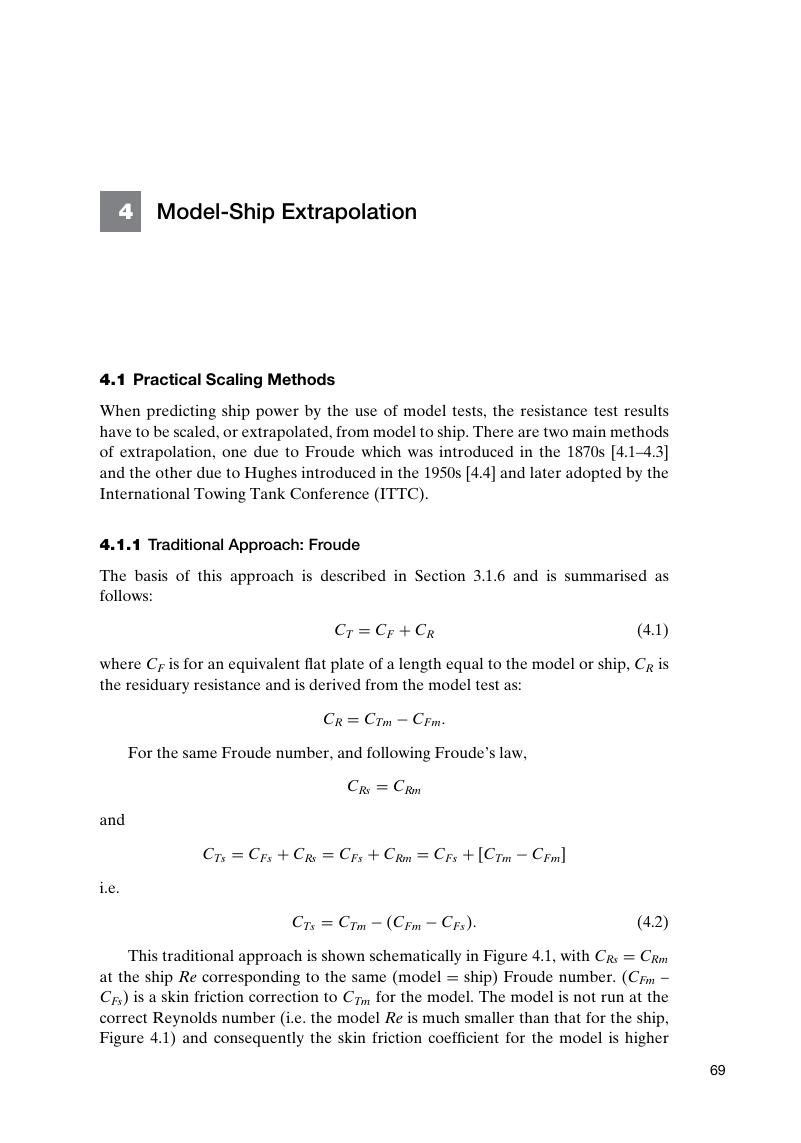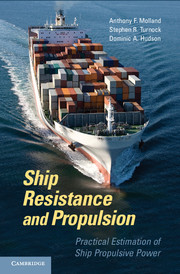Book contents
- Frontmatter
- Contents
- Preface
- Nomenclature
- Abbreviations
- Figure Acknowledgements
- 1 Introduction
- 2 Propulsive Power
- 3 Components of Hull Resistance
- 4 Model-Ship Extrapolation
- 5 Model-Ship Correlation
- 6 Restricted Water Depth and Breadth
- 7 Measurement of Resistance Components
- 8 Wake and Thrust Deduction
- 9 Numerical Estimation of Ship Resistance
- 10 Resistance Design Data
- 11 Propulsor Types
- 12 Propeller Characteristics
- 13 Powering Process
- 14 Hull Form Design
- 15 Numerical Methods for Propeller Analysis
- 16 Propulsor Design Data
- 17 Applications
- Appendix A1 Background Physics
- Appendix A2 Derivation of Eggers Formula for Wave Resistance
- Appendix A3 Tabulations of Resistance Design Data
- Appendix A4 Tabulations of Propulsor Design Data
- Index
- References
4 - Model-Ship Extrapolation
Published online by Cambridge University Press: 07 September 2011
- Frontmatter
- Contents
- Preface
- Nomenclature
- Abbreviations
- Figure Acknowledgements
- 1 Introduction
- 2 Propulsive Power
- 3 Components of Hull Resistance
- 4 Model-Ship Extrapolation
- 5 Model-Ship Correlation
- 6 Restricted Water Depth and Breadth
- 7 Measurement of Resistance Components
- 8 Wake and Thrust Deduction
- 9 Numerical Estimation of Ship Resistance
- 10 Resistance Design Data
- 11 Propulsor Types
- 12 Propeller Characteristics
- 13 Powering Process
- 14 Hull Form Design
- 15 Numerical Methods for Propeller Analysis
- 16 Propulsor Design Data
- 17 Applications
- Appendix A1 Background Physics
- Appendix A2 Derivation of Eggers Formula for Wave Resistance
- Appendix A3 Tabulations of Resistance Design Data
- Appendix A4 Tabulations of Propulsor Design Data
- Index
- References
Summary

- Type
- Chapter
- Information
- Ship Resistance and PropulsionPractical Estimation of Propulsive Power, pp. 69 - 84Publisher: Cambridge University PressPrint publication year: 2011



